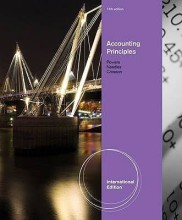Summary: Toxicology
- This + 400k other summaries
- A unique study and practice tool
- Never study anything twice again
- Get the grades you hope for
- 100% sure, 100% understanding
Read the summary and the most important questions on Toxicology
-
Introduction to Toxicology (TOX 1)
This is a preview. There are 8 more flashcards available for chapter 07/01/2019
Show more cards here -
What happened during the antiquity?
- There were already a lot of poisonous plants and animals.
- The first medical papyrus was written around 1500 BC in Egypt. This is called Ebers Papyrus.
- Hippocrates lived around 400 BC
- The chalice of Socrates was poisoned with Hemlock. Hemlock contains alkaloids that block acetylcholine receptors and suffocation occurs.
- There were already a lot of poisonous plants and animals.
-
What happened during the enlightment?
- Percival Pott (1714-1788) discovered a relationship between soot and scrotum cancer. He developed occupational toxicology and prevention.
- Mathieu Orfila (1787-1853) was the founder of modern toxicology, he did autopsies and analytical chemistry.
-
What happened during the renaissance?
- Paracelsus (1493-1541), Luther of medicine, said: "everything is poisonous, only the dose makes something not being a poison." His points of departure were: experimenting is essential, there should be distinguished between poisonous and therapeutic properties but this is not always possible, and compounds may have specific effects.
-
What happened during the industrial revolution?
Durning the industrial revolution there was a lot of occupational toxicology and environmental pollution. -
What happened in the twentieth century?
There was a lot of welfare (traveling - new diseases), scandals and disasters, and regulation. -
How can toxic effects be classified?
- Rate; acute or chronic
- Possibility for repair; reversible or irreversible
- Site of action. Local effect at site of first contact or systemic effect
-
Bacterial toxins (TOX 2)
This is a preview. There are 23 more flashcards available for chapter 10/01/2019
Show more cards here -
What are natural toxins?
- Bacteria
- Fungi
- Algaea
- Cyanobacteria
- Animals
- Plants
- Bacteria
-
Why do plants produce toxins?
To prevent being eaten. -
What are the two reasons animals can make toxins?
- Protection to predation (poisonous)
- To attack (and kill) other animals (venomous)
-
What is the biggest difference between a food infection and a food poisoning?
A food infection is caused by a microorganism, a food poisoning by a toxin.
- Higher grades + faster learning
- Never study anything twice
- 100% sure, 100% understanding
Topics related to Summary: Toxicology
-
Bacterial toxins (TOX 2)
-
Toxicokinetics - Absorption and Distribution + Toxicokinetics - Metabolism and Excretion (TOX 3)
-
Persistent Organic Pollutants (dioxins) + Pesticides (TOX 4)
-
Metals + Chemical carcinogenesis (TOX 5)
-
PCC-CALUX
-
Endocrine disruptors + Early exposure - Late effects + Risk assessment (TOX 6)

































